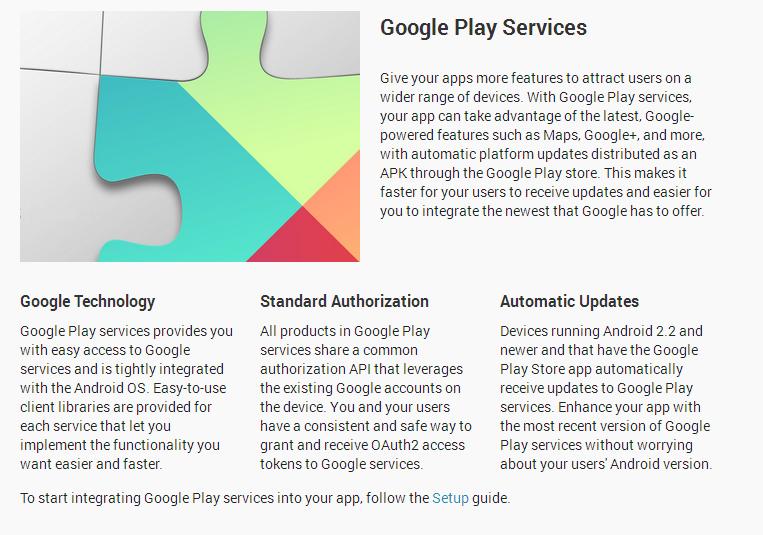An excellent post by Ron Amadeo on Ars Technica encapsulates Google’s changes to software upgrade procedures and rollouts of new generations of Android.
Amadeo’s thesis—and while unsupported by specific comment from Google, it’s pretty hard to refute—is that Google has given up on trying to dragoon all its OEMs into updating Android on their multitude of devices—often with their own in-house skins—and instead is going for incremental upgrades to the Android ecosystem through the back door.
The back door in this case is Google Play Services. As Amadeo says:
“It has its own silent, automatic update mechanism that the user has no control over. In fact, most of the time the user never even knows an update has happened. The reason for the complete and absolute power this app has is simple: Google Play Services is Google’s new platform.”
Furthermore:
“It’s part of the Google apps package, so it’s not open source. OEMs are not allowed to modify it, making it completely under Google’s control.”
Amadeo’s argument is that: “This should all lead to a more unified, less fragmented, healthier Android ecosystem.” And pro-open source quibblers should really blame the OEMs for being quick to skin but slow to upgrade.
 Google looks to be taking the best approach to reunifying its ever-more fragmented OS, and moving it on to an incremental improvement model. And while this puts more proprietary direct control back into Google’s hands, I don’t think anyone has bought the thesis that Android is a truly open OS in the sense that Linux is in a very long time.
Google looks to be taking the best approach to reunifying its ever-more fragmented OS, and moving it on to an incremental improvement model. And while this puts more proprietary direct control back into Google’s hands, I don’t think anyone has bought the thesis that Android is a truly open OS in the sense that Linux is in a very long time.
What are the implications for e-book readers? Well, since a huge proportion of them these days read their e-books on the various tablets, phones, etc., in that fragmented ecosystem, any global change in the Android OS is going to affect them.
For one thing, Google Books is right in the middle of the Google Play Store, so anyone using that as their e-book reading platform should stand to benefit directly from the dripfeed of improvements under the new dispensation.
More widely, popular e-reading software, including Amazon’s Android Kindle client, should be able to pick up similar enhancements along the way. And developers who have less to do worrying over platform fragmentation may be able to work faster and implement new and improved APIs more smoothly in Android, leading to more up-to-date and feature-rich ereading software.
There are some less positive implication too, though. For one, users who got by with devices running older versions of Android, or upgraded behind-the-curve hardware with distros like CyanogenMod (like I did with my old ZTE Skate running Paranoid Android Jelly Bean), will find their installed apps leaving their old hardware rapidly behind.
On my ZTE Skate, with its puny program memory, the Amazon Kindle app soon upgraded past the point where the device could hold it. Other users are going to hit similar problems, especially if they’re holdouts in the c.30% of Android OS users still on Gingerbread or earlier versions.
So device manufacturers may still have cause to celebrate, while customers may have to content themselves with reflecting that at least Android’s proliferation makes trading up a cheaper option.

































Let’s see how this flies on the Kindle Fire. It can be done today (see: http://reviews.cnet.co.uk/ipad-and-tablets/how-to-get-the-google-play-store-on-the-kindle-fire-hd-50010454/) but that might not continue to be possible. Then, we should be able to see whether other OEMs will follow suit or go with the flow. Obviously, I don’t see Amazon opting not to moderate this. It could cause their apps to perform less well over time.